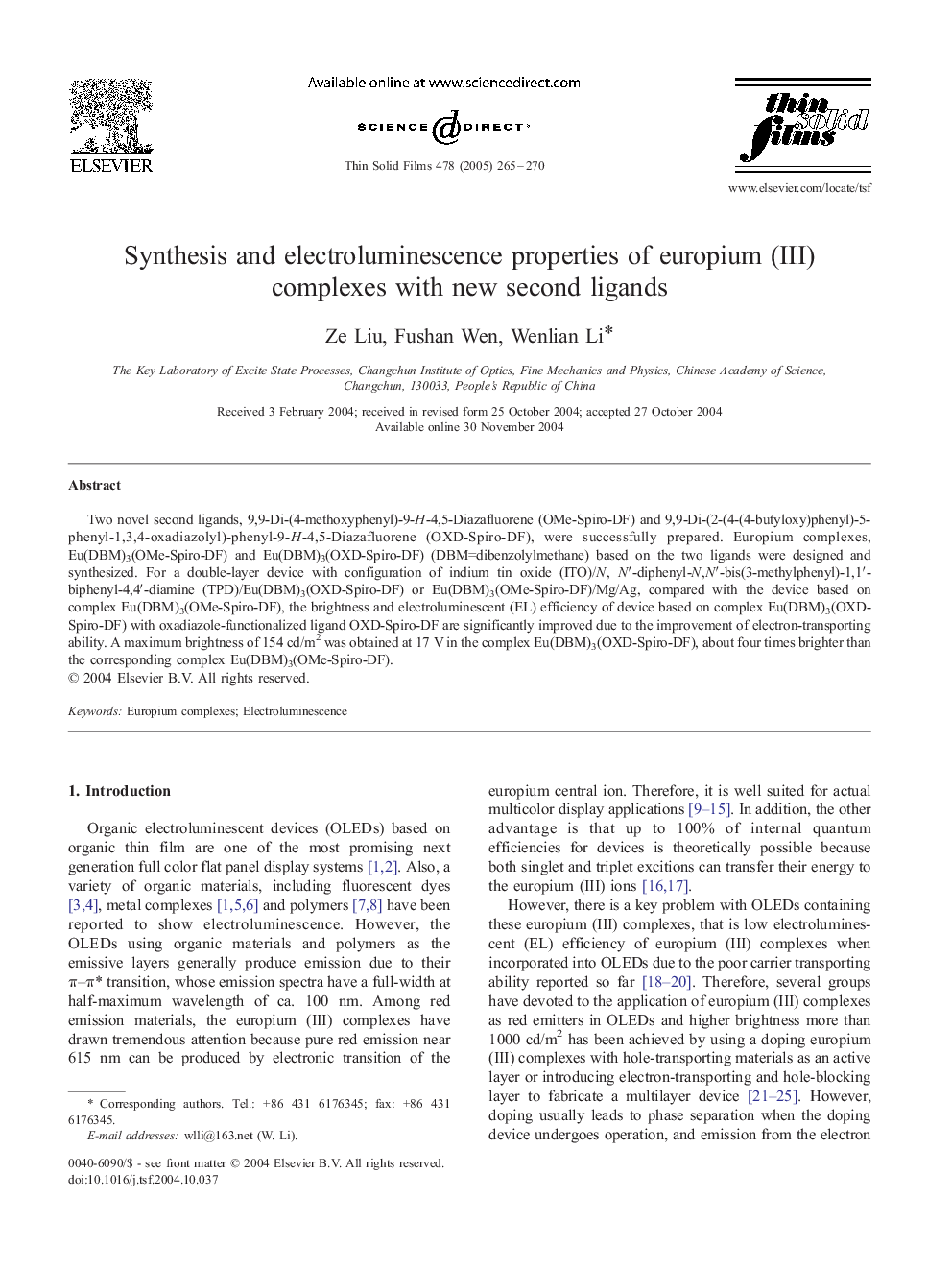| Article ID | Journal | Published Year | Pages | File Type |
|---|---|---|---|---|
| 9812812 | Thin Solid Films | 2005 | 6 Pages |
Abstract
Two novel second ligands, 9,9-Di-(4-methoxyphenyl)-9-H-4,5-` (OMe-Spiro-DF) and 9,9-Di-(2-(4-(4-butyloxy)phenyl)-5-phenyl-1,3,4-oxadiazolyl)-phenyl-9-H-4,5-Diazafluorene (OXD-Spiro-DF), were successfully prepared. Europium complexes, Eu(DBM)3(OMe-Spiro-DF) and Eu(DBM)3(OXD-Spiro-DF) (DBM=dibenzolylmethane) based on the two ligands were designed and synthesized. For a double-layer device with configuration of indium tin oxide (ITO)/N, Nâ²-diphenyl-N,Nâ²-bis(3-methylphenyl)-1,1â²-biphenyl-4,4â²-diamine (TPD)/Eu(DBM)3(OXD-Spiro-DF) or Eu(DBM)3(OMe-Spiro-DF)/Mg/Ag, compared with the device based on complex Eu(DBM)3(OMe-Spiro-DF), the brightness and electroluminescent (EL) efficiency of device based on complex Eu(DBM)3(OXD-Spiro-DF) with oxadiazole-functionalized ligand OXD-Spiro-DF are significantly improved due to the improvement of electron-transporting ability. A maximum brightness of 154 cd/m2 was obtained at 17 V in the complex Eu(DBM)3(OXD-Spiro-DF), about four times brighter than the corresponding complex Eu(DBM)3(OMe-Spiro-DF).
Related Topics
Physical Sciences and Engineering
Materials Science
Nanotechnology
Authors
Ze Liu, Fushan Wen, Wenlian Li,
